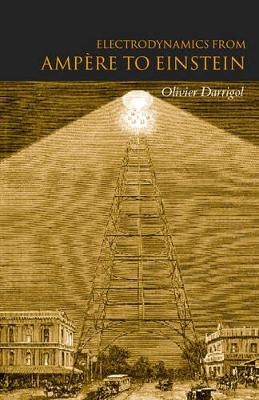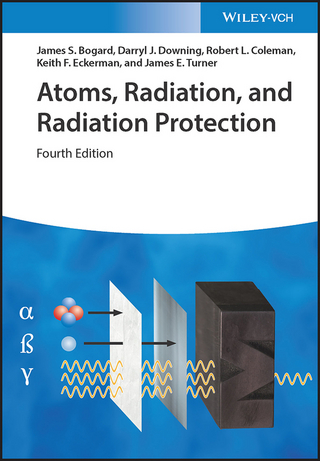
Electrodynamics from Ampère to Einstein
Seiten
2003
Oxford University Press (Verlag)
978-0-19-850593-8 (ISBN)
Oxford University Press (Verlag)
978-0-19-850593-8 (ISBN)
Recounts the developments of fundamental electrodynamics from Ampere's investigation of the forces between electric currents to Einstein's introduction of a doctrine of space and time. This book emphasizes on the diverse practices of electrodynamics and the interactions between the corresponding scientific traditions.
Three quarters of a century elapsed between Ampere's definition of electrodynamics and Einstein's reform of the concepts of space and time. The two events occurred in utterly different worlds: the French Academy of Sciences of the 1820s seems very remote from the Bern Patent Office of the early 1900s, and the forces between two electric currents quite foreign to the optical synchronization of clocks. Yet Ampere's electrodynamics and Einstein's relativity are firmly connected through a historical chain involving German extensions of Ampere's work, competition with British field conceptions, Dutch synthesis, and fin de siecle criticism of the aether-matter connection. Olivier Darrigol retraces this intriguing evolution, with a physicist's attention to conceptual and instrumental developments, and with a historian's awareness of their cultural and material embeddings.
This book exploits a wide range of sources, and incorporates the many important insights of other scholars. Thorough accounts are given of crucial episodes such as Faraday's redefinition of charge and current, the genesis of Maxwell's field equations, and Hertz's experiments on fast electric oscillations. Thus there emerges a vivid picture of the intellectual and instrumental variety of nineteenth-century physics. The most influential investigators worked at the crossroads between different disciplines and traditions: they did not separate theory from experiment, they frequently drew on competing traditions, and their scientific interests extended beyond physics into chemistry, mathematics, physiology, and other areas. By bringing out these important features, this book offers a tightly connected and yet sharply contrasted view of early electrodynamics.
Olivier Darrigol is a Research Director at the Centre National de la Recherche Scientifique, Paris. His research focuses on the history of quantum theory and of electrodynamics.
Three quarters of a century elapsed between Ampere's definition of electrodynamics and Einstein's reform of the concepts of space and time. The two events occurred in utterly different worlds: the French Academy of Sciences of the 1820s seems very remote from the Bern Patent Office of the early 1900s, and the forces between two electric currents quite foreign to the optical synchronization of clocks. Yet Ampere's electrodynamics and Einstein's relativity are firmly connected through a historical chain involving German extensions of Ampere's work, competition with British field conceptions, Dutch synthesis, and fin de siecle criticism of the aether-matter connection. Olivier Darrigol retraces this intriguing evolution, with a physicist's attention to conceptual and instrumental developments, and with a historian's awareness of their cultural and material embeddings.
This book exploits a wide range of sources, and incorporates the many important insights of other scholars. Thorough accounts are given of crucial episodes such as Faraday's redefinition of charge and current, the genesis of Maxwell's field equations, and Hertz's experiments on fast electric oscillations. Thus there emerges a vivid picture of the intellectual and instrumental variety of nineteenth-century physics. The most influential investigators worked at the crossroads between different disciplines and traditions: they did not separate theory from experiment, they frequently drew on competing traditions, and their scientific interests extended beyond physics into chemistry, mathematics, physiology, and other areas. By bringing out these important features, this book offers a tightly connected and yet sharply contrasted view of early electrodynamics.
Olivier Darrigol is a Research Director at the Centre National de la Recherche Scientifique, Paris. His research focuses on the history of quantum theory and of electrodynamics.
REHSEIS 59 rue Nationale Dalle Les Olympiades - Tour Montréal 75013 PARIS et 83 rue Broca 75013 Paris darrigol@paris7.jussieu.fr
PREFACE; 1 FOUNDATIONS; 2 GERMAN PRECISION; 3 BRITISH FIELDS; 4 CLERK MAXWELL; 5 BRITISH MAXWELLIANS; 6 OPEN CURRENTS; 7 CONDUCTION OF ELECTROLYTES AND GASES; 8 THE ELECTRON THEORIES; 9 OLD PRINCIPLES AND A NEW WORLD VIEW; APPENDICES 1-12
| Erscheint lt. Verlag | 1.7.2003 |
|---|---|
| Zusatzinfo | numerous line drawings and halftones |
| Verlagsort | Oxford |
| Sprache | englisch |
| Maße | 157 x 235 mm |
| Gewicht | 870 g |
| Themenwelt | Naturwissenschaften ► Physik / Astronomie ► Angewandte Physik |
| Naturwissenschaften ► Physik / Astronomie ► Elektrodynamik | |
| Naturwissenschaften ► Physik / Astronomie ► Relativitätstheorie | |
| ISBN-10 | 0-19-850593-0 / 0198505930 |
| ISBN-13 | 978-0-19-850593-8 / 9780198505938 |
| Zustand | Neuware |
| Haben Sie eine Frage zum Produkt? |
Mehr entdecken
aus dem Bereich
aus dem Bereich


